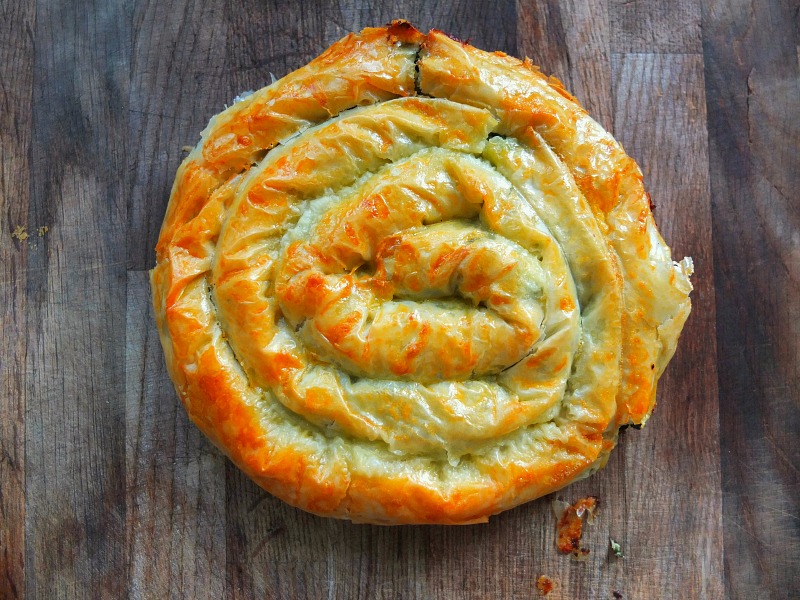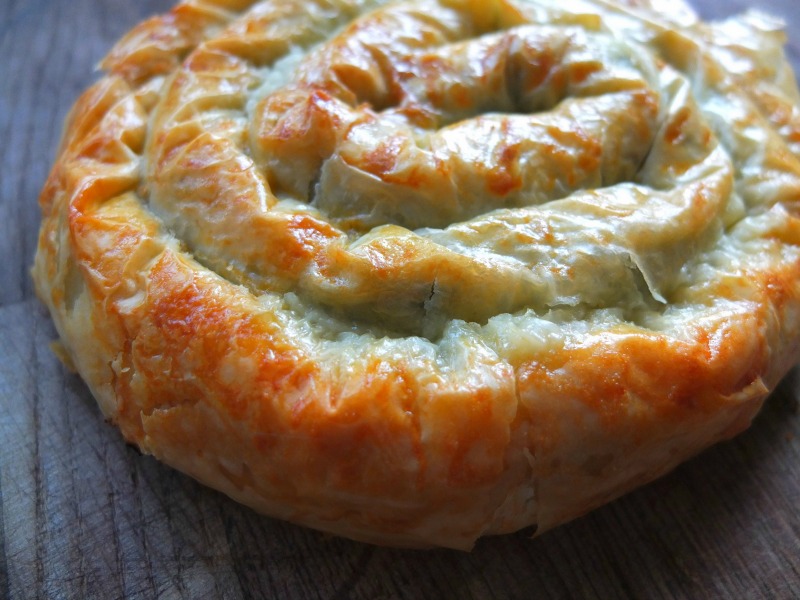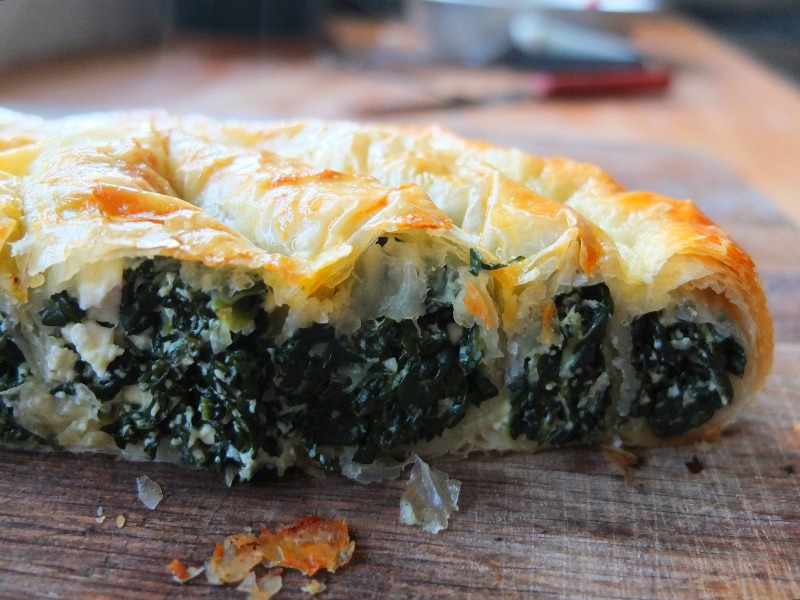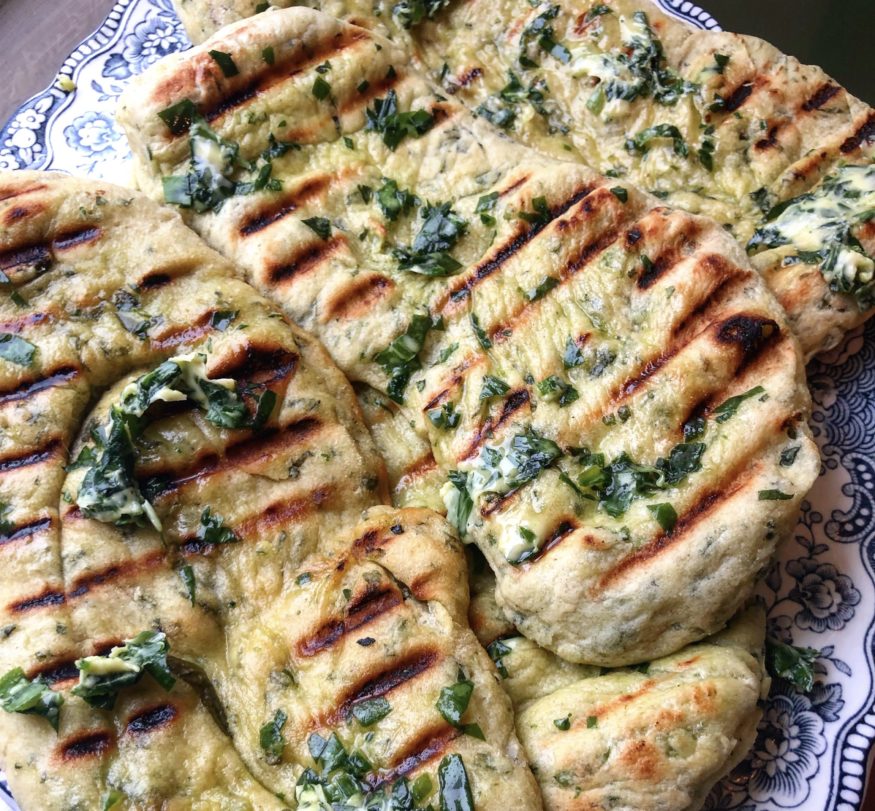
We went foraging for wild garlic in London last weekend, stuffing two big bags with pungent green sprays. After sifting through for buds (now pickled), we found ourselves left with an entire binbag-full. It triggered flashbacks to the time we ended up with 34kg of spring onions.
So it’s wild garlic in everything. I’ve put it into my easy everyday flatbread recipe, smearing them with extra wild garlic butter while still warm from the skillet. D has made batches of wild garlic kimchi and wild garlic pesto, and we had wild garlic buttered soldiers with our eggs this morning (recommend). Yesterday I made the wild garlic and cheese börek recipe below, and I’m still staring down a half-full bag.
Here are the recipes for the wild garlic flatbreads and the börek – enjoy! You, too, could stink of garlic 24/7. Oh, and before you ask: I got the stuff in Mile End, not Camberwell. Sorry! I believe Dulwich Woods is full of it, though.
Wild Garlic Flatbread Recipe
Makes 8-12 depending on how large you want them.
500g strong white flour plus a little extra for dusting and mixing
2 teaspoons salt
30ml olive oil
300ml warm water
1 packet of instant yeast
150g wild garlic leaves, washed and chopped
Extra wild garlic chopped and mashed into butter is recommended for serving!
Mix everything together in a bowl and give it a knead on a lightly floured surface for a few minutes, until smooth and springy. You may need to add a little more than 500g flour (just a dusting), as the wild garlic adds moisture but just mix it together and see how you go. You want a nice, smooth, springy dough.
Leave the dough in a warm place for an hour or so until it has roughly doubled in size.
Knock back the dough and divide into 8 balls for larger breads or 12 for small.
Roll the dough balls flat and cook for 2-3 minutes in a properly hot, dry pan (I use a cast iron griddle) until a little charred on each side. They will start to puff up when ready. Keep them warm inside a clean tea towel while you cook the rest.
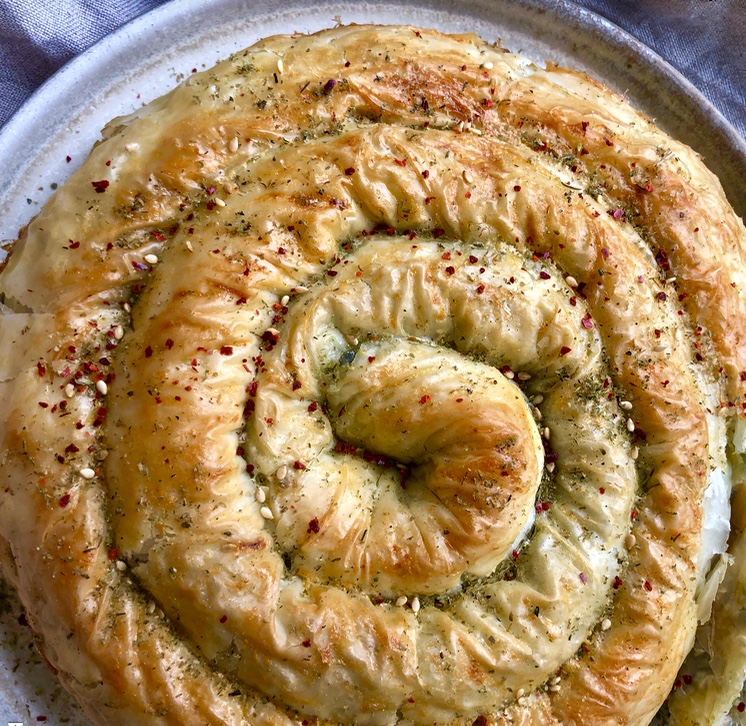
Wild Garlic and Cheese Börek Recipe
150g wild garlic leaves washed and chopped (don’t worry about them being *too* finely chopped as they will wilt and it’s nice to have some slightly larger bits I think)
200g white Turkish cheese (I bought ‘beyaz peynir’ which literally means ‘white cheese’ in the Turkish Food Centre but you could use feta if you don’t have a similar shop nearby)
1 packet yufka pastry (again I buy this in the Turkish Food Centre – you could use filo if you like but it will be a much crisper result as filo is thicker)
Around 100g butter, melted
1 egg, beaten
A sprinkle of za’atar and chilli to serve (optional)
Preheat the oven to 180C.
Mix the chopped wild garlic leaves well with the crumbled white cheese.
Have your melted butter ready, then lay out a double sheet of yufka on a work surface. Brush all over with butter. Lay another two sheets overlapping the edge on the right-hand side of the first sheets. Brush with butter. Repeat this four or 5 times (depends how much surface space you have, to be honest.
On the bottom edge of the sheets, make a long strip of the wild garlic and cheese mixture, as if you are making the largest spicy cigarette of your life. Carefully roll it up into a long sausage, brushing the edge at the top with a final layer of butter before sealing. Curl it around into a snail shape, then add to a cake tin, brushing again with butter (bit of a theme, the butter thing). Finally, give it a quick wash with the egg – this makes it nice and golden.
Bake for 35-40 minutes, or until golden brown. It tastes best when still slightly warm from the oven.
